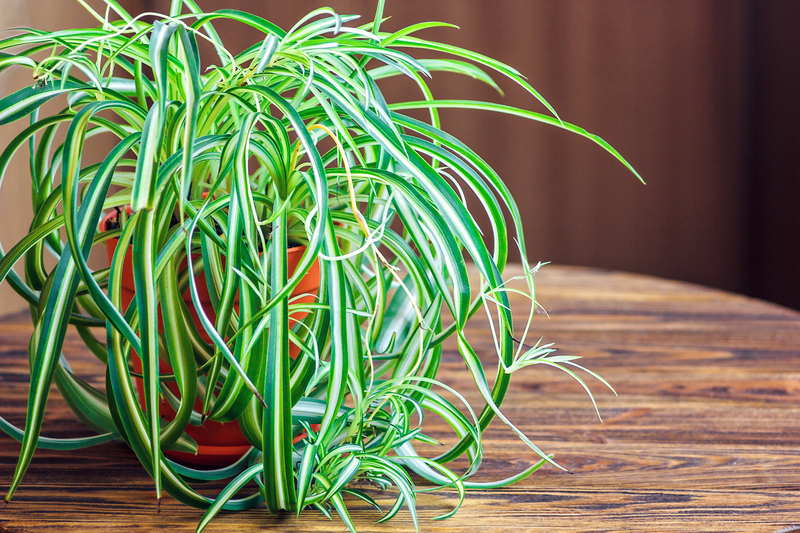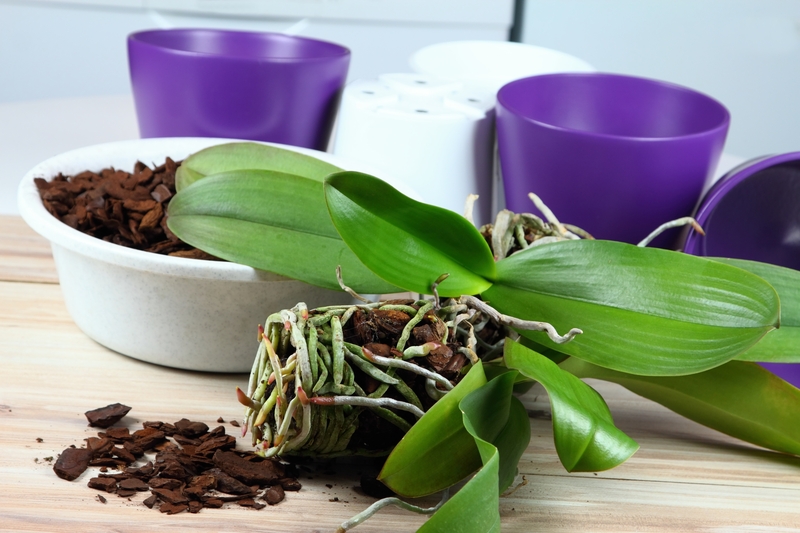Revitalize Your Neglected Garden: Fresh Start Ideas
Posted on 15/09/2025
Revitalize Your Neglected Garden: Fresh Start Ideas
If your backyard oasis is looking more like a wild jungle than a place of respite, you're not alone. Many homeowners have a neglected garden hiding behind fences, overgrown shrubs, and tangled weeds. The good news? You can breathe new life into your outdoor space with a thorough garden revival plan. This comprehensive guide will walk you through inspiring ideas and actionable steps for revitalizing your forgotten garden and transforming it into a blooming haven you'll be proud of.
Why Garden Renewal Matters
A neglected garden isn't just an eyesore. Unkempt outdoor spaces can attract pests, decrease property value, and make it difficult for your favorite plants to thrive. Whether you want a lush vegetable patch, a tranquil flower bed, or a kid-friendly play area, reviving your neglected yard brings numerous benefits, including:
- Increased curb appeal and potential property value
- Healthier environment for local wildlife and pollinators
- Space for relaxation and social gatherings
- Room to grow fresh produce and herbs
- Boosted mood and well-being from time spent outdoors

Step 1: Assess the State of Your Neglected Garden
Before plunging into garden renovation projects, take a good look at what you're working with. Ask yourself:
- What plants, shrubs, or trees are salvageable?
- Which areas receive full sun, partial sun, or shade?
- Are there signs of pest infestations or diseases?
- How is the soil quality and drainage?
- What's the current layout and structure of your garden?
Take photos and sketch a simple map. This will help you prioritize tasks and visualize your new design.
Step 2: Clear and Clean Up
A neglected plot can harbor piles of leaves, rotting branches, trash, and invasive weeds. Start with a thorough garden clean-up to create a blank slate.
Key Clean-Up Tasks:
- Remove all weeds by hand or using eco-friendly weed killers
- Prune dead or damaged branches from trees and shrubs
- Cut back overgrown hedges and vines
- Rake up fallen leaves and debris
- Dispose of old pots, broken tools, and any rubbish
Tip: Rent a yard waste dumpster or contact your municipality's green waste removal service for large clearouts.
Step 3: Improve Your Garden Soil
soil is the foundation of a productive, healthy garden. Years of neglect might mean compacted earth, depleted nutrients, or poor drainage.
Revitalize the soil with these steps:
- Test the soil for pH and nutrient levels (DIY kits available at garden centers)
- Add compost or well-rotted manure for a nutrient boost
- Mix in organic matter like leaf mold, peat, or coconut coir
- Aerate compacted patches by turning the soil with a garden fork
- Apply mulch to retain moisture and suppress weeds
Healthy soil supports robust root growth, drought resistance, and an explosion of blooms.
Step 4: Develop a Practical and Inspiring Design
Now comes the fun part: reimagining your revitalized garden. Consider what you want for your outdoor space--do you crave a lush flower garden, a productive vegetable patch, or a minimalist zen retreat?
Garden renewal works best with a clear vision and a simple plan.
Questions to Consider:
- What activities will you do in your garden? (relaxation, dining, gardening, play)
- Will you need new pathways, patios, or raised beds?
- How much time and maintenance can you commit to ongoing gardening?
- What color schemes and plant styles do you love?
Sketch your layout or use a free online garden planner to visualize zones, seating, and plants.
Step 5: Select New Plants with Purpose
Restore vibrancy to your neglected garden by choosing low-maintenance, resilient plants suited to your climate and soil. Mix evergreens, perennials, and seasonal annuals for year-round interest.
- Opt for native plants--they're hardier and attract local wildlife
- Mix in pollinator-friendly flowers
- Include a balance of heights and textures for visual appeal
- Herbs and veggies are both beautiful and delicious!
Step 6: Improve Garden Structures and Features
A fresh start in the garden isn't just about plants--hardscaping can make a huge impact. Fix or add:
- Pathways with stone, gravel, or stepping stones
- Fencing, trellises, and arbors for structure
- Raised beds for vegetables and flowers
- Compost bins or rain barrels for sustainability
- Garden furniture--benches, hammocks, or a bistro set
Paint tired fences in a fresh color or repurpose old materials for rustic planters.
Step 7: Add Water Features for a Tranquil Touch
Water features can instantly transform your neglected yard into a serene retreat. Even a small birdbath, fountain, or pond adds a sense of calm and encourages wildlife.
Choose options that fit your space and budget.
Step 8: Create Zones for Function and Fun
Divide your renewed garden into purposeful zones:
- Dining and lounging areas with cozy seating
- Play zones for kids or pets
- Vegetable and herb gardens for fresh produce
- Shady nooks for reading and rest
Step 9: Illuminate with Creative Lighting
Restore magic to your outdoors after dark. Innovative garden lighting highlights new growth and extends time spent outside.
- Solar stake lights to illuminate pathways
- String lights overhead for a festive atmosphere
- Lanterns and spotlights to accentuate focal trees or art
- Motion-sensor security lighting for safety
Lighting helps you appreciate your garden's renewal any time of day.
Step 10: Establish Easy Maintenance Routines
A revitalized landscape stays beautiful with simple upkeep. Adopt these maintenance habits:
- Weekly weeding and deadheading of flowers
- Regular mulching to conserve moisture
- Consistent watering (install soaker hoses or automated timers for ease)
- Seasonal pruning and lawn care
- Apply natural pest control as needed
Bonus: Sustainable Revitalization Practices
As you refresh your neglected garden, incorporate eco-friendly methods for a truly modern outdoor sanctuary.
- Compost organic waste to enrich soil and reduce landfill
- Choose drought-tolerant plants to conserve water
- Install rain barrels for irrigation
- Encourage beneficial insects and birds with native flowers
- Avoid chemical pesticides and use natural alternatives
Inspiring Before-and-After Transformations
Nothing motivates more than seeing the impact of a true garden revival. Here are some inspiring transformations:
- A barren, weedy lot brought to life with raised veggie beds and pollinator flowers.
- Shady, overgrown corners pruned and planted with shade-loving hostas, ferns, and a hammock for rest.
- Neglected lawn areas replaced with wildflower meadows for a low-maintenance, high-impact look.

Frequently Asked Questions About Revitalizing Neglected Gardens
How do I prioritize garden renovation when I have little time?
Focus on clean-up and soil health first. A little regular effort goes a long way. Add plants and features as time allows--slow and steady yields big results.
Can I rejuvenate my garden on a tight budget?
Absolutely! Use plant swaps with neighbors, start seeds instead of buying mature plants, repurpose old materials for borders and beds, and make your own compost. Small investments can create dramatic improvements.
What are the best low-maintenance plants for garden renewal?
Look for native perennials, ornamental grasses, lavender, coneflowers, hostas, and sedums. These require less water and care, thriving with minimal attention.
Your Revitalized Garden Awaits
Don't let a neglected outdoor space hold you back from the joy and beauty of nature. Revitalize your neglected garden with a clear plan, simple improvements, and a dose of creativity. Every step you take--big or small--transforms your garden into a sanctuary brimming with life, color, and peace.
With these fresh start ideas and practical guidance, you'll soon be enjoying a flourishing backyard and reaping the rewards of your efforts for years to come.

